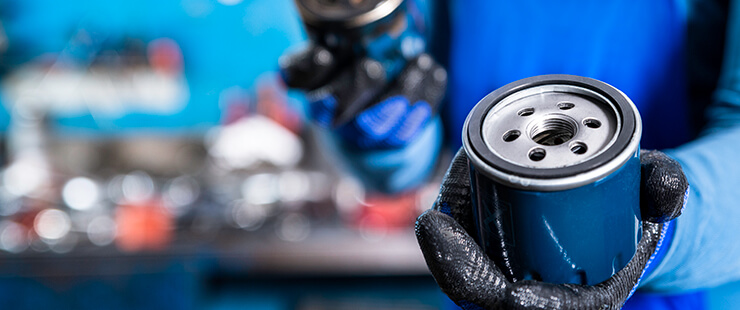Get unique, complex parts easily. No matter your requirements, Chaoyi Spring creates hard-to-produce coil springs and wire forms.
Let us help you create the custom wire form you need, from S-hooks and J-hooks to utility hooks and more.
We work closely with customers across a wide range of industries, helping them design and manufacture made-to-order parts.
Why choose Chaoyi Spring? We prioritize customer-focused collaboration, modern equipment and the latest technology to make your parts per print.
Find the information and guidance you need, from measuring a spring to learning about materials, placing an order and much more.
Tension springs, also known as extension springs, are a ubiquitous component in countless mechanical devices. They are designed to exert a force when stretched, providing the necessary energy to move


Tension springs, also known as extension springs, are a ubiquitous component in countless mechanical devices. They are designed to exert a force when stretched, providing the necessary energy to move or hold objects in place. When choosing a tension spring, one of the most crucial factors to consider is its size. This article will delve into the intricacies of tension springs by size, exploring the various parameters that influence their performance and providing a comprehensive guide to selecting the ideal spring for your specific application.

The size of a tension spring encompasses multiple dimensions that directly impact its characteristics. These dimensions include the wire diameter, the spring's free length, the outside diameter of the coil, and the number of active coils. Each of these parameters plays a vital role in determining the spring's stiffness, load capacity, and overall behavior.
The wire diameter is the thickness of the wire used to create the coil. A larger wire diameter results in a stronger and stiffer spring, capable of handling heavier loads. However, it also increases the spring's overall size and weight. Conversely, a smaller wire diameter yields a more flexible and compact spring, but its load capacity is reduced.
The free length refers to the overall length of the spring when it is not under any load. It determines the spring's maximum extension before it reaches its full potential. A longer free length allows for greater extension, but also requires more space for installation.
The outside diameter of the coil is the distance across the spring, measured from the outer edge of one coil to the outer edge of the opposing coil. A larger outside diameter generally corresponds to a higher spring rate, meaning it requires more force to stretch. Conversely, a smaller outside diameter leads to a lower spring rate.
The number of active coils refers to the number of coils that contribute to the spring's elasticity. Increasing the number of active coils generally increases the spring's stiffness. However, it's essential to balance this with the wire diameter, as too many coils can lead to excessive spring length and reduced efficiency.
Beyond the fundamental size parameters, several other factors influence the selection of tension springs, including the intended application, the load requirements, the space constraints, and the desired spring rate. It's crucial to carefully consider these factors to ensure the chosen spring meets the application's specific needs.
The intended application dictates the spring's overall design, including its size, material, and end configurations. For example, a tension spring used in a delicate electronic device will have vastly different requirements than one used in a heavy-duty industrial machine. Understanding the application environment, including temperature variations, corrosive elements, and potential vibrations, is essential for selecting a spring that can withstand the intended conditions.
The spring must be strong enough to handle the loads it will encounter. This involves considering both the static load, which is the constant force applied to the spring, and the dynamic load, which fluctuates over time. The chosen spring must have a sufficient load capacity to prevent failure under these conditions.
The available space for installation is a critical factor. Springs come in a wide range of sizes, and it's essential to select a spring that fits comfortably within the designated area. A cramped installation can lead to spring deformation or premature failure.
The spring rate, measured in force per unit of extension, determines how much force the spring exerts for a given stretch. A higher spring rate indicates a stiffer spring that requires more force to stretch. The desired spring rate depends on the specific application and how much force is needed to achieve the desired extension.
Tension springs are available in a variety of designs, each suited to specific applications. Common types include:
Selecting the appropriate tension spring involves a careful analysis of the application's specific requirements. The following steps can guide you through the process:
Understanding the factors influencing tension springs by size is essential for selecting the right spring for your application. By carefully considering the wire diameter, free length, outside diameter, and number of active coils, along with the other factors discussed, you can ensure that the chosen spring meets your specific requirements and delivers the desired performance.
Whether you're designing a simple mechanical device or a complex industrial system, choosing the right tension spring can significantly impact its functionality and longevity. By utilizing the knowledge provided in this guide and consulting with spring specialists when needed, you can confidently select the perfect tension spring for your application, ensuring its reliable performance and success.
Browse some of the custom wire forms and springs that we manufacture. Don’t see what you need? We specialize in made-to-order products that meet your application requirements.
Visit Our GalleryNeed a custom wire form or coil spring? We make it work. Fill out the contact form and a representative will respond within 1 business day. If you have a PDF or CAD file, you can submit to request a quote.